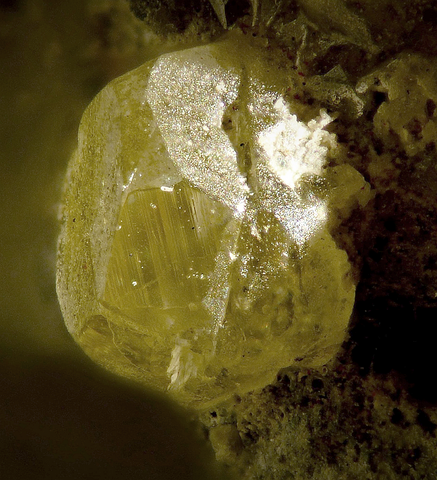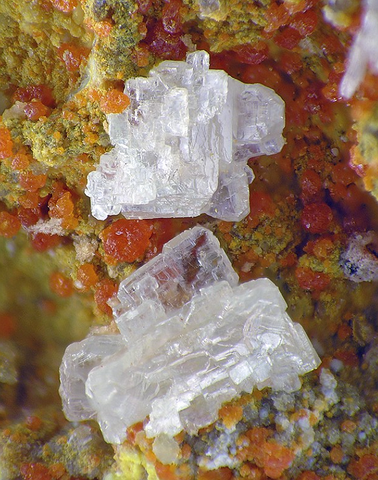CALOMEL
Class : Halides
Subclass : Chlorides
Crystal system : Tetragonal
Chemistry : HgCl
Rarity : Rare
Calomel is a rare chloride found in the superficial oxidation zone of mercury deposits, especially in desert regions. it results from an alteration of cinnabar in an environment rich in chlorides : these can be brought by outcropping evaporites or by saline air if the deposit is close to the sea. In addition to cinnabar, calomel is practically always accompanied eglestonite, another chloride of mercury. It is a mineral whose etymology is uncertain, it can come from the Greek kalos (beautiful) and meli (honey) because of its sweet taste ; or melas (black) because the term calomel once referred to black mercury sulfide. The crystals are rare, often complex, rich in faces, most often square and tabular on {001} or elongated prismatic according to [001]. The mineral is grayish or yellowish-gray, turning black on exposure to light, with a strong adamantine luster. Of low hardness (1 to 2), it is very dense (more than 7), plastic and easily sectile. It fluoresces in a characteristic brick red. It is a very accessory ore of mercury.
Main photo : Calomel from Mariposa Mine, Texas, USA © Robert O. Meyer
Calomel in the World

Twinning
Twins known on {112}, as contact or interpenetrating twin, often repeated and with irregular and hidden boundaries.
Fakes and treatments
No fake identified for this mineral species.
Hardness : 1.5 to 2
Density : 7.15
Fracture : Conchoidal
Streak : White-yellow
TP : Translucent to transparent
RI : 1.973 to 2.656
Birefringence : 0.683
Optical character : Uniaxial +
Pleochroism : Low
Fluorescence : Brick red
Solubility : Aqua regia
Magnetism : None
Radioactivity : None

